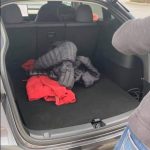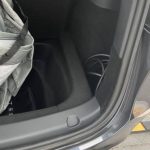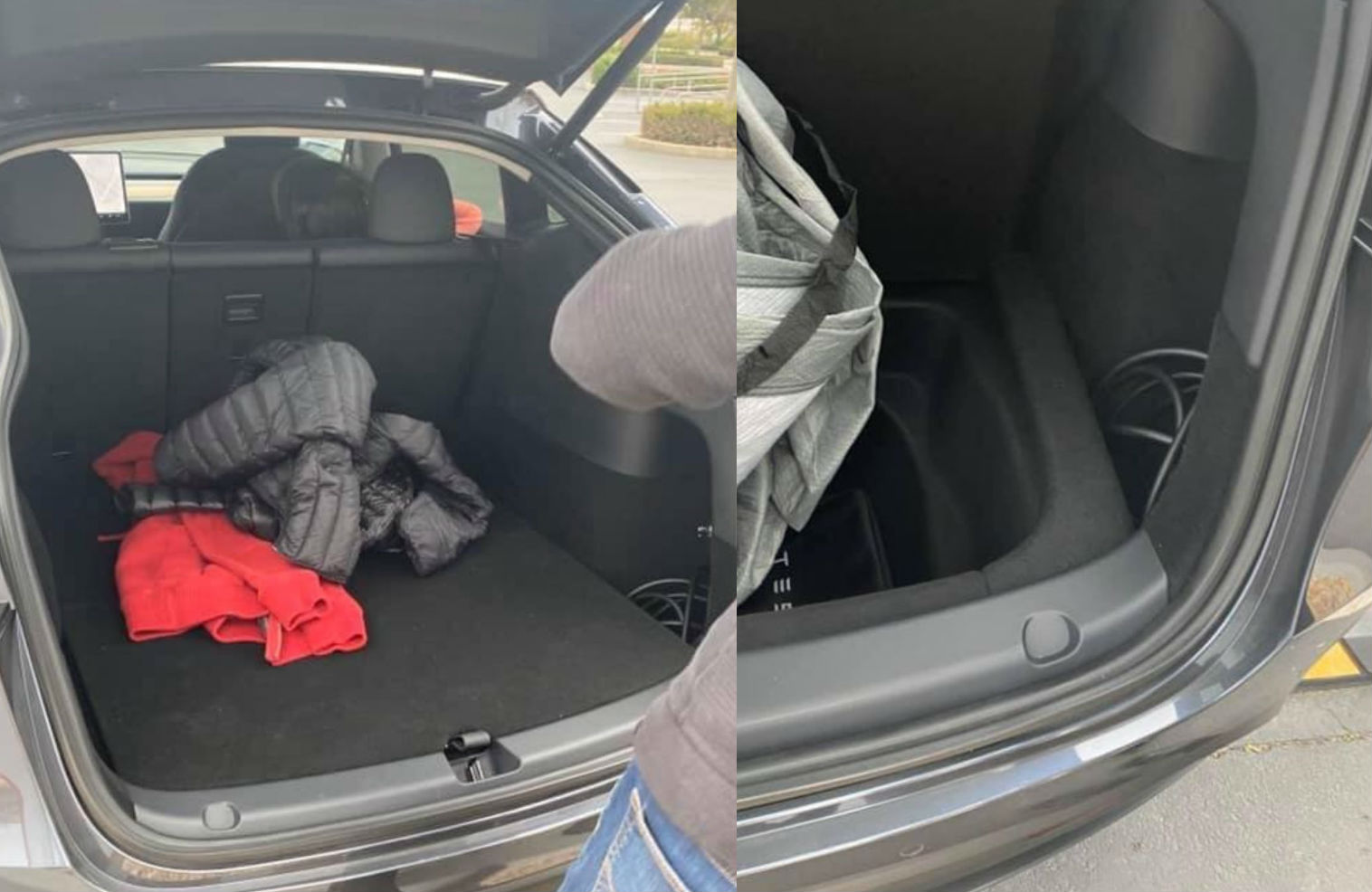
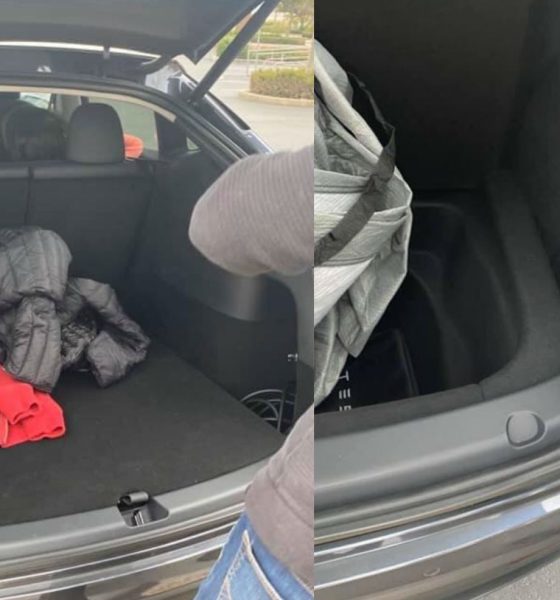
News
Tesla Model Y has rear cargo space that’s more Model X than Model 3
Recent images of a Tesla Model Y release candidate with its rear hatch open has provided a small teaser of the upcoming all-electric crossover’s rear cargo space. Based on the photos, it appears that the Model Y’s primary luggage area is very generous, to the point where it almost seems comparable to that of the larger Tesla Model X. This is quite impressive, especially considering that the Model Y shares 75% of its parts with the Model 3 sedan, which is far smaller than the Model X.
The new pictures were shared on the Tesla Model Y Enthusiasts Facebook page, with members Thomas Andre Davik and Josh Jones sharing a couple of new shots from a recent Model Y sighting. Fortunately, the two Tesla enthusiasts were able to capture a photo of the vehicle with its open rear hatch, showing how much cargo space is available when the second row seats are up.
- Tesla Model Y trunk (Source: Thomas Andre Davik | Model Y Enthusiast Facebook Page)
- Tesla Model Y extra storage under main trunk(Source: Josh Jones | Model Y Enthusiast Facebook Page)
The Tesla Model Y with rear hatch open. (Credit: Thomas Andre Davik and Josh Jones/Facebook)
Immediately noticeable from the images was the fact that the Model Y’s luggage area is quite large. Surprisingly large, in fact, even without its additional storage space underneath the trunk itself. An image of this additional storage area shows that it is quite deep as well, possibly fitting a couple of extra bags during long drives.
Reactions from the Tesla community show that the Model Y’s cargo space may end up being a key selling point for the upcoming vehicle. Tesla Model X 90D owner and r/TeslaMotors subreddit member u/kenriko noted that the Model Y’s luggage space looks comparable in utility as his vehicle’s cargo area with its third row folded. Fellow Tesla enthusiast Christopher Pichner also remarked that the Model Y’s design makes for a cargo area that looks more usable than his 2018 Subaru Forester, which lists a 76 cu ft of luggage space versus the Model Y’s 66 cu ft.
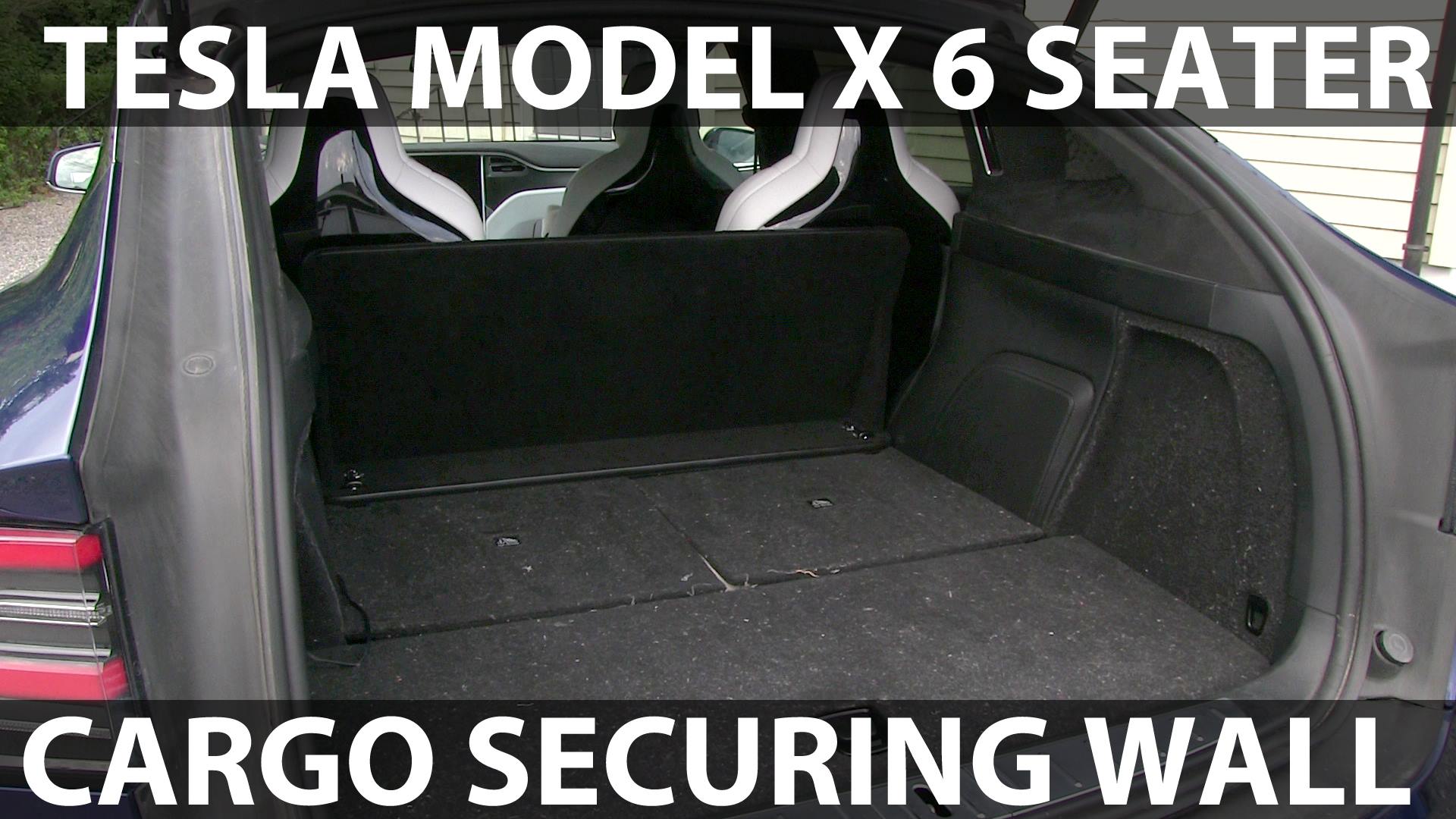
These observations, while only based on a couple of new photos of the Model Y, bodes well for the upcoming all-electric crossover, as it suggests that Tesla is pretty much optimizing the vehicle’s utility as much as possible, making it more attractive to the mainstream crossover market. The comparisons to the Model X’s cargo space are quite impressive too, considering that the Model Y shares most of its parts with Tesla’s smallest vehicle today, the Model 3.
As the Model Y nears its first deliveries, it is becoming more and more evident that the vehicle is designed to disrupt an established auto market. Apart from its competitive price, the Model Y has the performance to match, with its top-tier version being capable of sprinting from 0-60 mph in 3.5 seconds. The Model Y also has a middle row pass-through feature that will allow owners to transport long items like skis without any issues. Together with a seemingly very generous trunk space, these little details may very well prove to be among the reasons why the Model Y may eventually start eating into the market of mainstream vehicles like the Honda CR-V and the Toyota RAV-4, much like the Model 3 and more affordable cars like the Toyota Corolla and the Honda Accord.

Elon Musk
Tesla CEO Elon Musk announces major update with texting and driving on FSD
“Depending on context of surrounding traffic, yes,” Musk said in regards to FSD v14.2.1 allowing texting and driving.
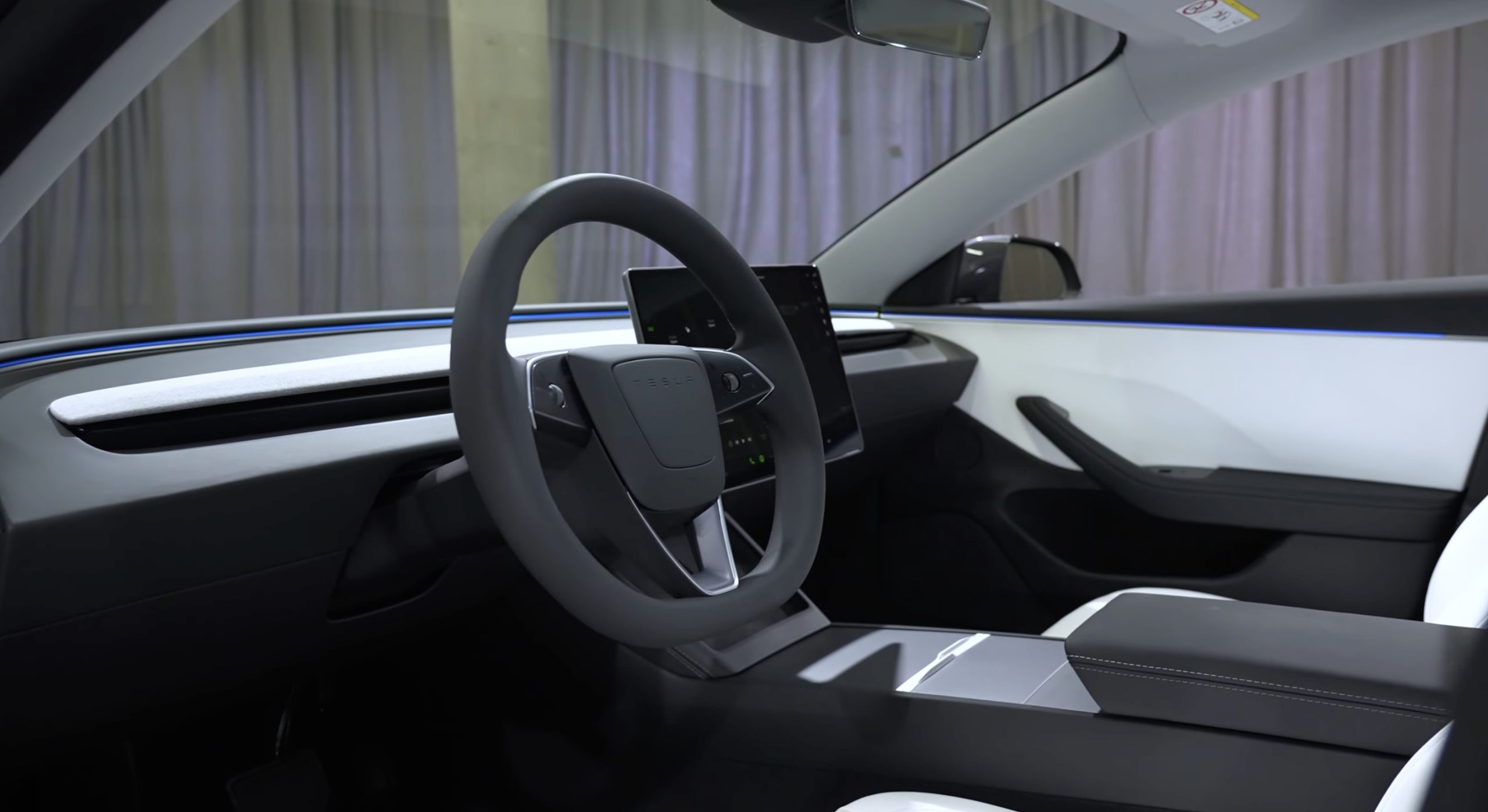
Tesla CEO Elon Musk has announced a major update with texting and driving capabilities on Full Self-Driving v14.2.1, the company’s latest version of the FSD suite.
Tesla Full Self-Driving, even in its most mature and capable versions, is still a Level 2 autonomous driving suite, meaning it requires attention from the vehicle operator.
You cannot sleep, and you should not take attention away from driving; ultimately, you are still solely responsible for what happens with the car.
The vehicles utilize a cabin-facing camera to enable attention monitoring, and if you take your eyes off the road for too long, you will be admonished and advised to pay attention. After five strikes, FSD and Autopilot will be disabled.
However, Musk announced at the Annual Shareholder Meeting in early November that the company would look at the statistics, but it aimed to allow people to text and drive “within the next month or two.”
He said:
“I am confident that, within the next month or two, we’re gonna look at the safety statistics, but we will allow you to text and drive.”
“I am confident that, within the next month or two, we’re gonna look at the safety statistics, but we will allow you to text and drive.”
Does anyone think v14.3 will enable this? pic.twitter.com/N2yn0SK70M
— TESLARATI (@Teslarati) November 23, 2025
Today, Musk confirmed that the current version of Full Self-Driving, which is FSD v14.2.1, does allow for texting and driving “depending on context of surrounding traffic.”
Depending on context of surrounding traffic, yes
— Elon Musk (@elonmusk) December 4, 2025
There are some legitimate questions with this capability, especially as laws in all 50 U.S. states specifically prohibit texting and driving. It will be interesting to see the legality of it, because if a police officer sees you texting, they won’t know that you’re on Full Self-Driving, and you’ll likely be pulled over.
Some states prohibit drivers from even holding a phone when the car is in motion.
It is certainly a move toward unsupervised Full Self-Driving operation, but it is worth noting that Musk’s words state it will only allow the vehicle operator to do it depending on the context of surrounding traffic.
He did not outline any specific conditions that FSD would allow a driver to text and drive.
News
Tesla Semi just got a huge vote of confidence from 300-truck fleet
The confidential meeting marks a major step for the mid-sized carrier in evaluating the electric truck for its regional routes.
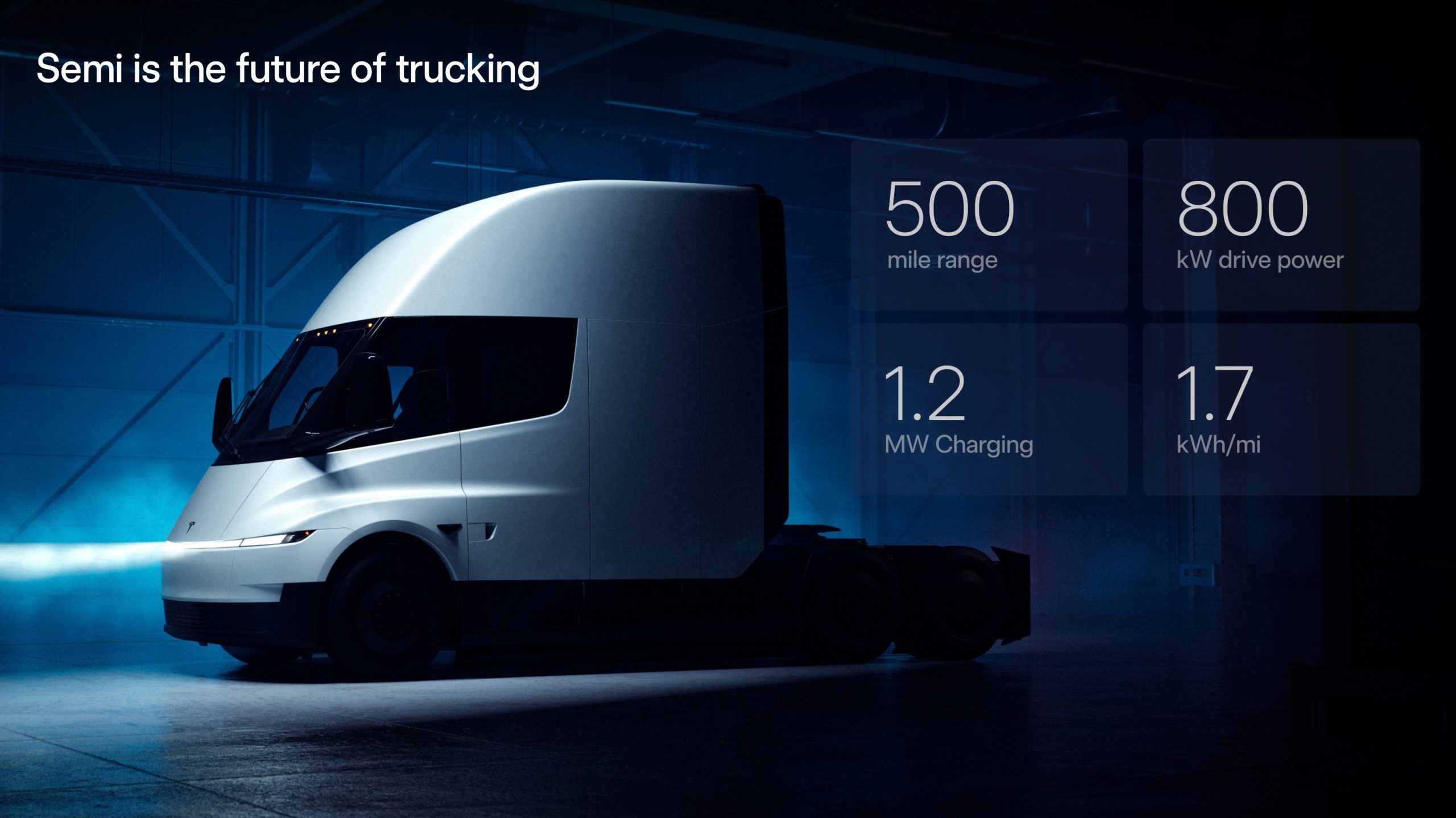
The Tesla Semi is moving closer to broader fleet adoption, with Keller Logistics Group wrapping up a key pre-production planning session with the electric vehicle maker’s team this week.
The confidential meeting marks a major step for the mid-sized carrier in evaluating the electric truck for its regional routes.
Keller’s pre-production Tesla Semi sessions
Keller Logistics Group, a family-owned carrier with over 300 tractors and 1,000 trailers operating in the Midwest and Southeast, completed the session to assess the Tesla Semi’s fit for its operations. The company’s routes typically span 500-600 miles per day, positioning it as an ideal tester for the Semi’s day cab configuration in standard logistics scenarios.
Details remain under mutual NDA, but the meeting reportedly focused on matching the truck to yard, shuttle and regional applications while scrutinizing economics like infrastructure, maintenance and incentives.
What Keller’s executives are saying
CEO Bryan Keller described the approach as methodical. “For us, staying ahead isn’t a headline, it’s a habit. From electrification and yard automation to digital visibility and warehouse technology, our teams are continually pressure-testing what’s next. The Tesla Semi discussion is one more way we evaluate new tools against our standards for safety, uptime, and customer ROI. We don’t chase trends, we pressure-test what works,” Keller said.
Benjamin Pierce, Chief Strategy Officer, echoed these sentiments. “Electrification and next-generation powertrains are part of a much broader transformation. Whether it’s proprietary yard systems like YardLink™, solar and renewable logistics solutions, or real-time vehicle intelligence, Keller’s approach stays the same, test it, prove it, and deploy it only when it strengthens service and total cost for our customers,” Pierce said.
News
Tesla extends FSD Supervised ride-alongs in Europe by three months
Needless to say, it does appear that FSD fever is starting to catch in Europe.

Tesla appears to be doubling down on its European Full Self-Driving (Supervised) push, with the company extending its demo ride-along program by three months until the end of March 2026. The update seems to have been implemented due to overwhelming demand.
Needless to say, it does appear that FSD fever is starting to catch in Europe.
Extended FSD demonstrations
Tesla EU Policy and Business Development Manager Ivan Komušanac shared on LinkedIn that the company is offering ride-along experiences in Germany, France and Italy while working toward FSD (Supervised) approval in Europe.
He noted that this provides a great feedback opportunity from the general public, encouraging participants to record and share their experiences. For those unable to book in December, Komušanac teased more slots as “Christmas presents.”
Tesla watcher Sawyer Merritt highlighted the extension on X, stating that dates now run from December 1, 2025, to March 31, 2026, in multiple cities including Stuttgart-Weinstadt, Frankfurt and Düsseldorf in Germany. This suggests that the FSD ride-along program in Europe has officially been extended until the end of the first quarter of 2026.
Building momentum for European approval
Replies to Merritt’s posts buzzed with excitement, with users like @AuzyMale noting that Cologne and Düsseldorf are already fully booked. This sentiment was echoed by numerous other Tesla enthusiasts on social media. Calls for the program’s expansion to other European territories have also started gaining steam, with some X users suggesting Switzerland and Finland as the next locations for FSD ride-alongs.
Ultimately, the Tesla EU Policy and Business Development Manager’s post aligns with the company’s broader FSD efforts in Europe. As per recent reports, Tesla recently demonstrated FSD’s capabilities for Rome officials. Reporters from media outlets in France and Germany have also published positive reviews of FSD’s capabilities on real-world roads.
